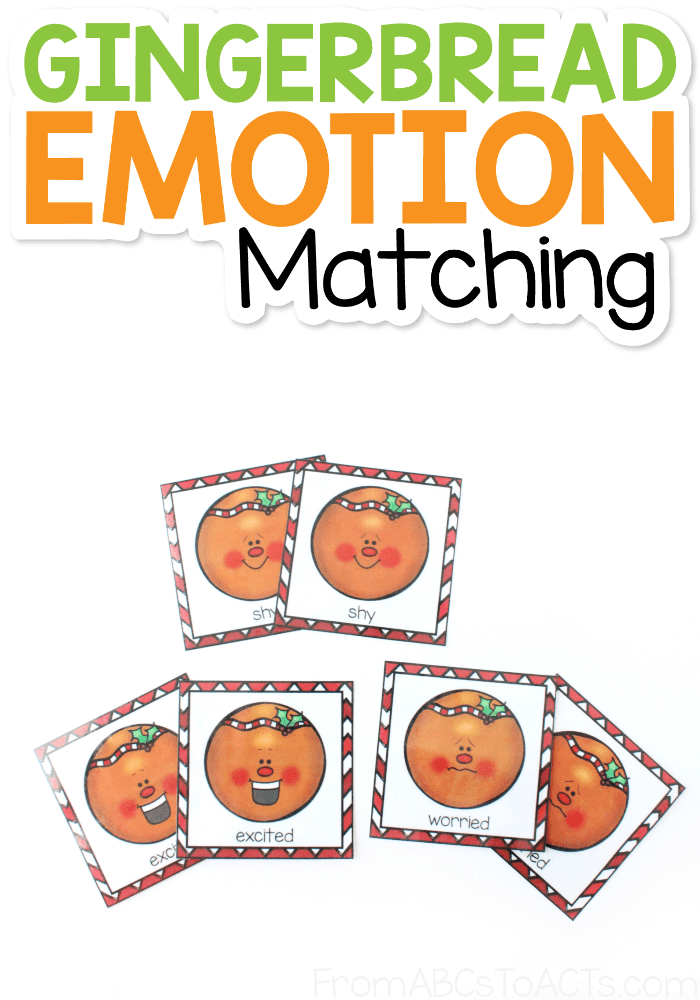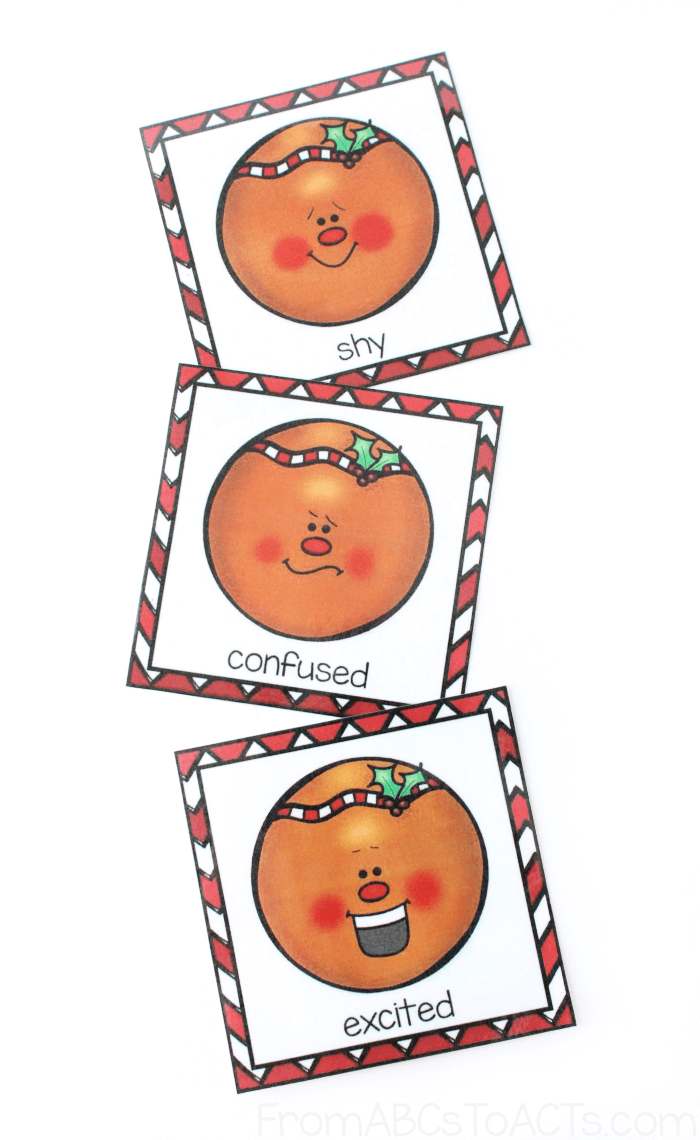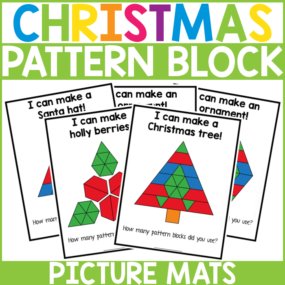This post may contain affiliate links. For more information, please see my full disclosure policy.
During the holidays, people often experience a wide variety of emotions. The days are busy, which can be frustrating at times, but they are also full of joy. Children are even more prone to emotional overload and they are still devolving crucial skills. It is important that they learn the names of emotions and receive help learning to name their own feelings in order to be more empathetic towards others. This gingerbread emotion matching game will allow them to work on those crucial skills by expanding their emotional vocabulary and strengthening their visual perception skills.

Gingerbread Fine Motor Skills
This gingerbread matching game is a fantastic way to work on many important skills. Preschoolers will love the cute design of the characters. Their hands will be getting a workout while they work to match the cards. With each card they turn they will enhance their fine motor skills.
For younger kids, they may just go through the cards and find the matches. Older kids can use this activity to make a memory matching game. For this option, have the child shuffle the cards (or mix them all up) then lay them out in rows. They will then select two cards to flip over. If the cards match, they keep them to the side. If they do not match, they flip them both back over and try again. Having them help prepare the game allows even more of a fine motor skills workout!

Using the Gingerbread Emotion Matching Game
This printable activity is easy to prepare and use. For durability, the cards will need to be laminated before cutting them out. This printable includes two identical sets of gingerbread emotion cards.
- Confused
- Shy
- Angry
- Worried
- Scared
- Happy
- Sad
- Excited
Each of the expressive faces will provide an opportunity to discuss the emotion in more detail. As each of the cards are drawn, you can take the time to ask the child to tell you about a time that they felt the emotion. For example, if the card drawn is “worried”, ask about a time they felt worried. For younger kids, you could talk about a time that you felt the emotion to help them understand.

Visual Perception Skills and Empathy
Being able to distinguish a sad face from a happy face is rather simple for most children. As we know though, emotions are complex and can be challenging to recognize from facial expressions. For children, they are still developing their visual perception skills. Participating in activities, such as this gingerbread emotion matching printable, are wonderful ways to explore the different emotions. Empathy is a vital part of being human. It is not always easy to be empathetic, especially for children that live with a very “all about me” point-of-view.
Try to utilize this matching game to talk about how we may think another person may be feeling using their facial expressions as the guide. It is a great introduction to empathetic thinking that children of all ages can benefit from.

